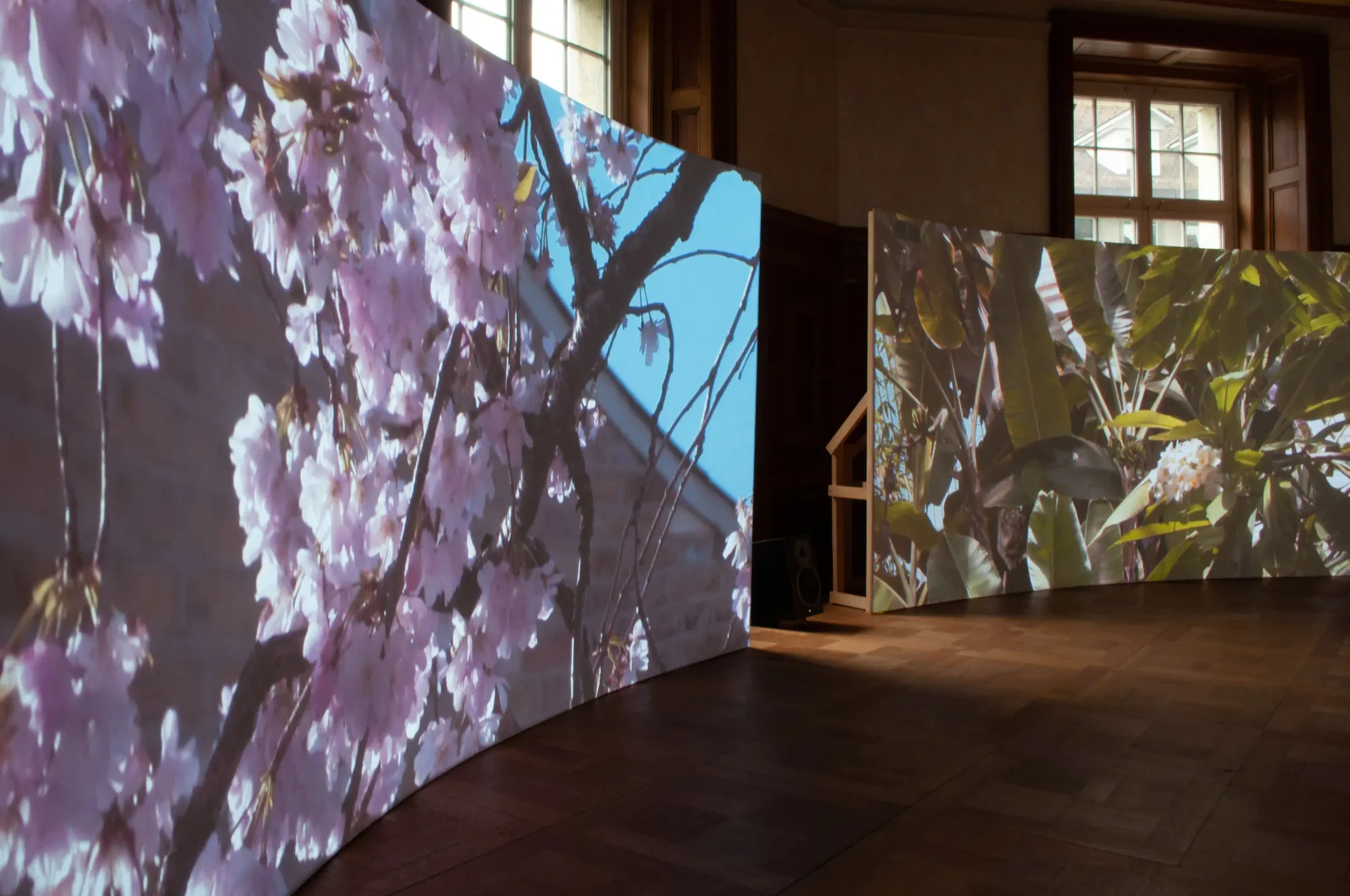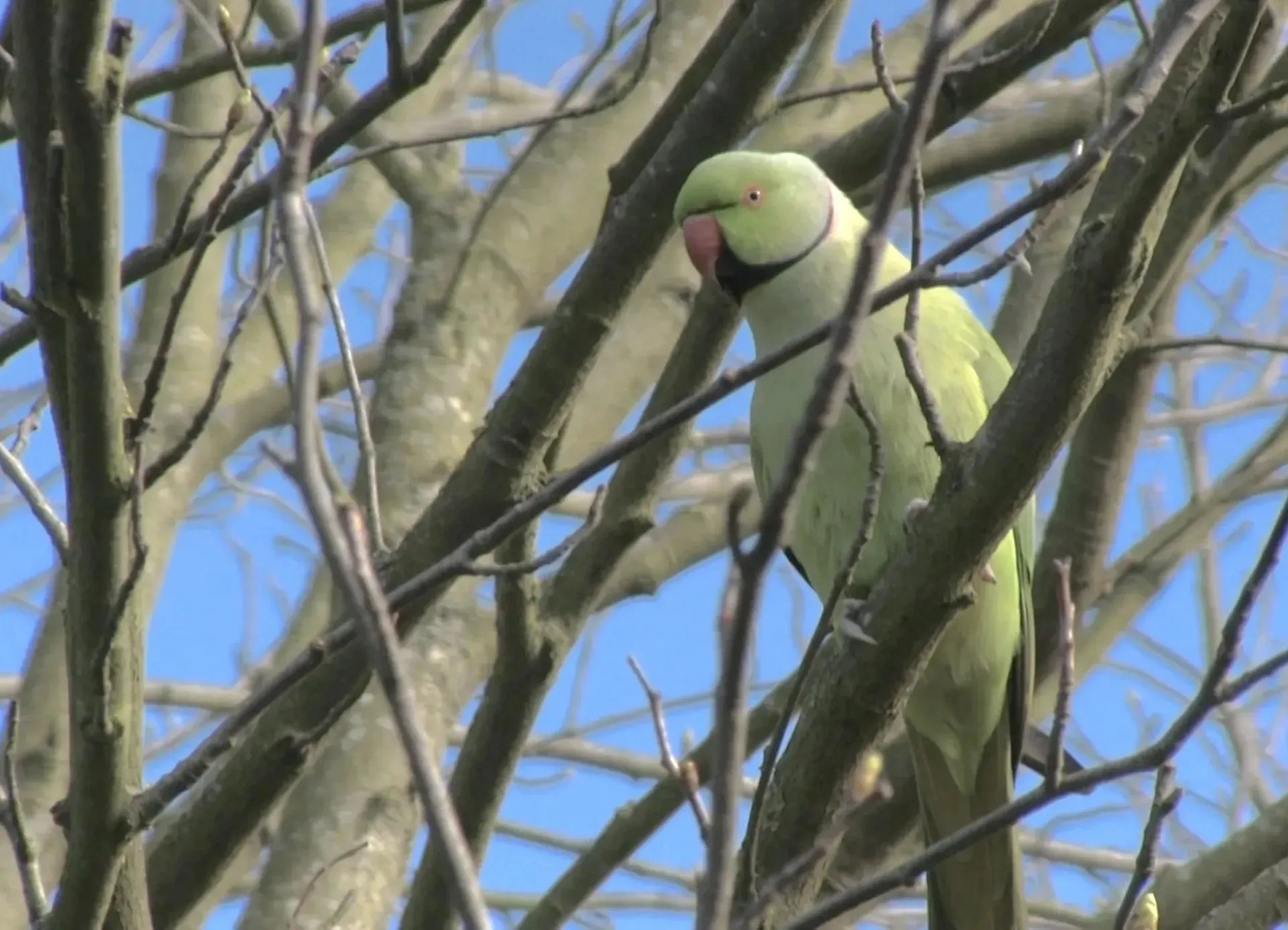
H A B I T A T
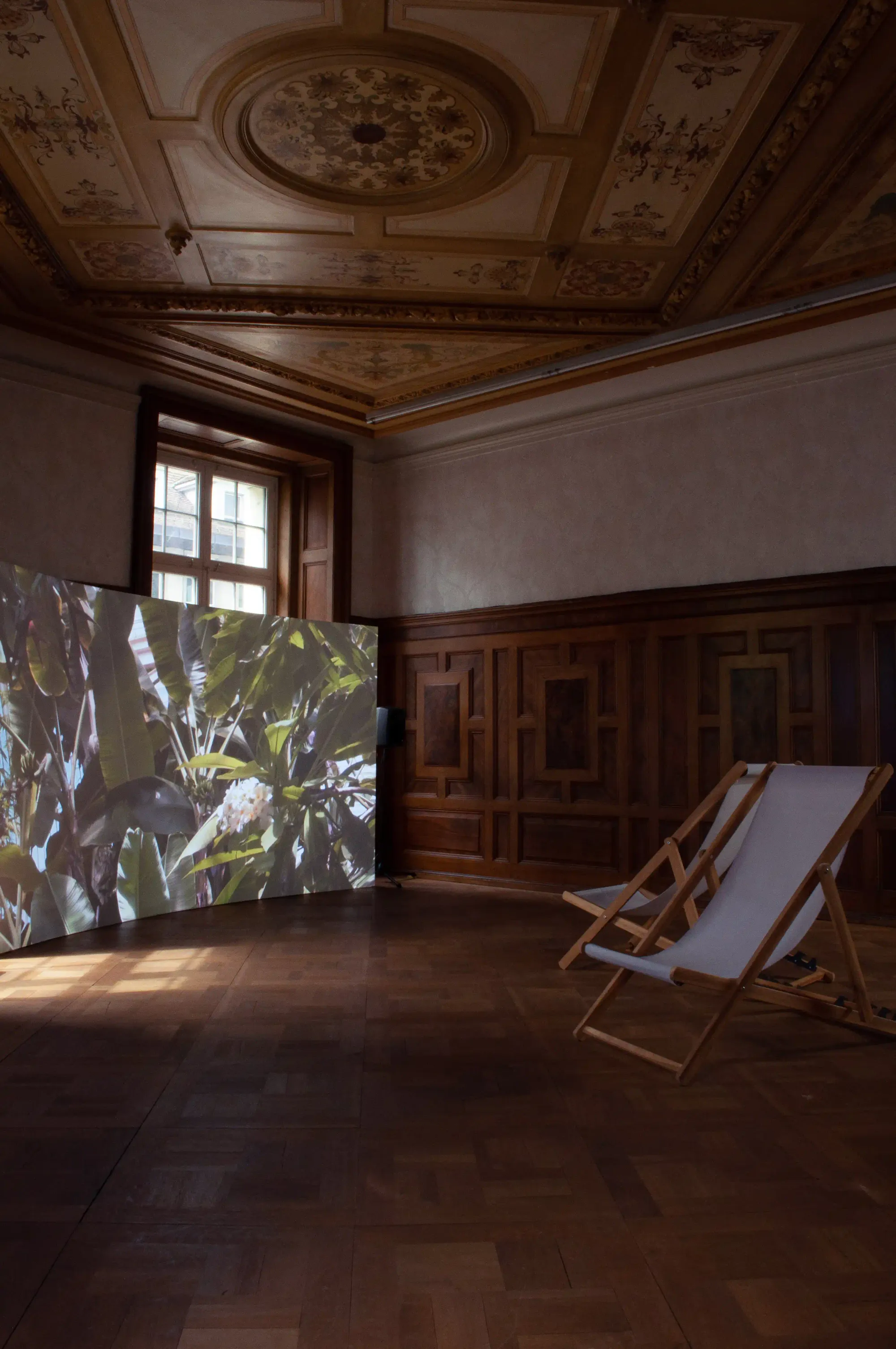
EN / HABITAT, 2019.
London, UK
Video installation: 2-channel video, 6-channel audio
2 curved projection screens, audio mixer, 5 speakers
Video Loop 1 (FHD), 6:45
Video Loop 2 (FHD), 9:45
Habitat presents, in a two-channel video projection, a colony of robins native to Europe that has settled within the tropical climate of the Palm House at Kew Gardens in London. Despite windows and doors being periodically open, the birds remain year-round in this new environment, defined by warm temperatures, high humidity, and a variety of exotic plants.
In the adjacent projection, collared parakeets animate the urban airspace of metropolitan London. Native to Asia and Africa, this parrot species — like the robin — is non-migratory, but has established itself as a neozoon in the European climate through release or escape. A multi-channel audio track blends the distinct soundscapes of these two habitats live within the exhibition space, inviting visitors to take a seat in the provided deckchairs and immerse themselves in the moving panoramic imagery.
The video installation can be read as a reflection on the transformation of the concept of home, echoing migration movements shaped by shifting environmental and living conditions.
For this work Daniel Vollmond collaborated with his partner Lynne Kouassi.
DE / HABITAT, 2019.
London, UK
Videoinstallation: 2-Kanal Video, 6-Kanal Audio
2 gebogene Projektionsflächen, Mischpult, 5 Lautsprecher
Video Loop 1 (Full HD), 6:45
Video Loop 2 (Full HD), 9:45
Habitat zeigt in einer Zweikanal-Videoprojektion eine Kolonie von Rotkehlchen, die in Europa beheimatet sind und sich im tropischen Klima des Palmenhauses von Kew Gardens in London niedergelassen haben. Obwohl Fenster und Türen regelmäßig geöffnet werden, bleiben die Vögel das ganze Jahr über in dieser neuen Umgebung, die durch warme Temperaturen, hohe Luftfeuchtigkeit und eine Vielzahl exotischer Pflanzen gekennzeichnet ist.
In der angrenzenden Projektion beleben Halsbandsittiche den städtischen Luftraum der Metropole London. Diese in Asien und Afrika beheimatete Papageienart ist - wie das Rotkehlchen - kein Wandervogel, hat sich aber durch Auswilderung oder Flucht als Neozoon im europäischen Klima etabliert. Eine Mehrkanal-Tonspur mischt die unterschiedlichen Klanglandschaften dieser beiden Lebensräume live im Ausstellungsraum und lädt die Besucher ein, auf den bereitgestellten Liegestühlen Platz zu nehmen und in die bewegten Panoramabilder einzutauchen.
Die Videoinstallation kann als eine Reflexion über den Wandel des Konzepts von Heimat gelesen werden, in der sich Migrationsbewegungen widerspiegeln, die von sich verändernden Umwelt- und Lebensbedingungen geprägt sind.
Diese Arbeit entstand in künstlerischer Zusammenarbeit zwischen Daniel Vollmond und seiner Partnerin Lynne Kouassi.
A Clan of Robins living in the Palm Tree House at Kew Gardens
Channel 1 - 6:45min
Rose-Ringed Parakeets living in London‘s Suburbs
Channel 2 - 9:45min
About Robins and Parakeets
A CLAN OF ROBINS LIVING IN THE PALM TREE HOUSE AT KEW GARDENS
"Robins hardly migrate, and if they do, only from the northern part of Europe to escape harsh winters. Then they can be found as far south as Sicily and Spain, even Morocco and Egypt, but only to return to colder climates when it gets warm again.
Even though by nature European, these birds in the Palm Tree House have changed their habit and chosen to live all year round in a tropical environment. Their new home features hot air and high humidity, as well as various exotic plants of rainforests and paradise beaches."
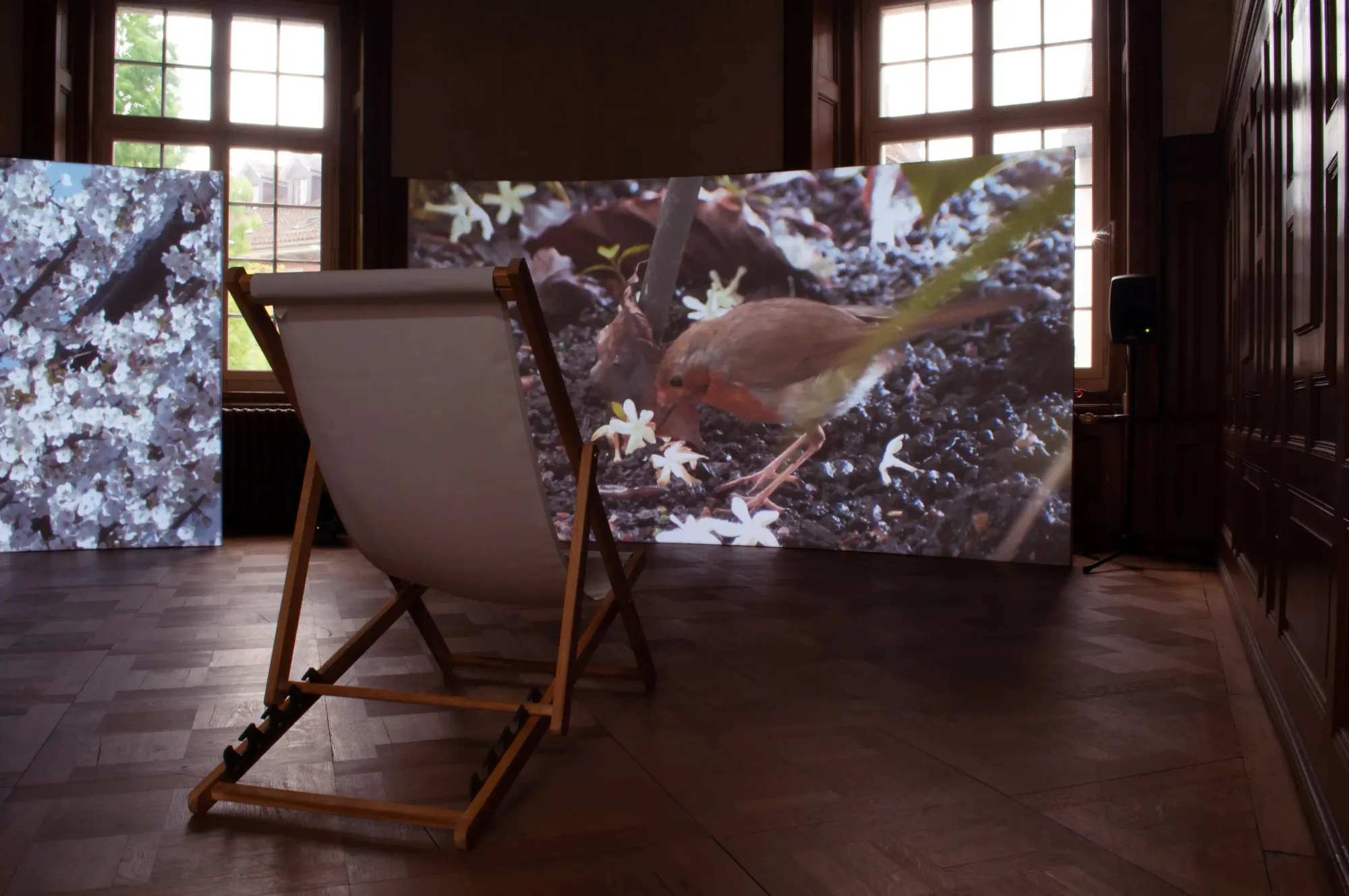
ROSE-RINGED PARAKEETS LIVING IN LONDON'S SUBURBS
"The airspace above London is filled with passing clouds and distant airplanes - invisible lines that connect different cities and human metropolises on this planet.
Just like robins, parakeets normally do not migrate. Originally, they are native to Africa and the Indian Subcontinent. How exactly the current population of parakeets first came to exist and thrive in England is unknown, although the most common theory is that since the 1970s, several breeding pairs of the species either escaped or were released on purpose."
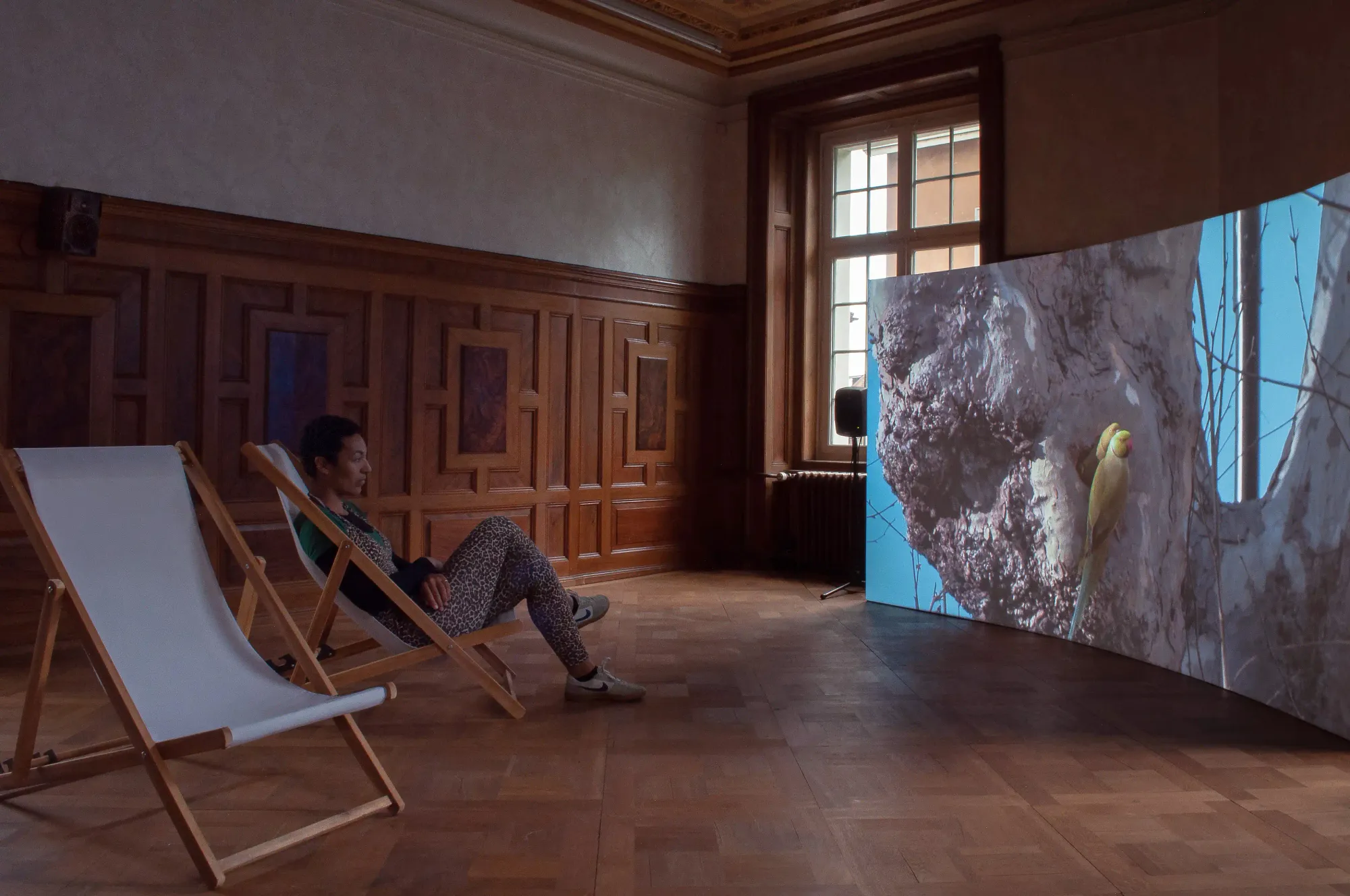
Regionale 21 | Songs from the end of the world
05.12.2020 - 09.05.2021, E-Werk Freiburg (DE)
Curated by Heidi Brunnschweiler / Jana Spät (Assistance)
Participating Artists:
Anja Cueni, Daniel Vollmond & Lynne Kouassi, Jasper Mehler, Paula Mierzowsky & Johann Diel, Björn Nussbächer, Julian Salinas, Lea Torcelli, Florian Thate, Jodok Wehrli
E-WERK / Galerie für Gegenwartskunst
Eschholzstr. 77
79106 Freiburg
Germany
UNBEHAUST
04.05.2019 - 23.06.2019, Kunsthaus Langenthal (CH)
Curated by Eva-Maria Knüsel
Participating Artists:
Anja Braun, Leo Hoffmann, Daniel V. Keller, Lynne Kouassi & Daniel Vollmond and Rebecca Kunz
Kunsthaus Langenthal
Marktgasse 13
CH-4900 Langenthal
Switzerland
